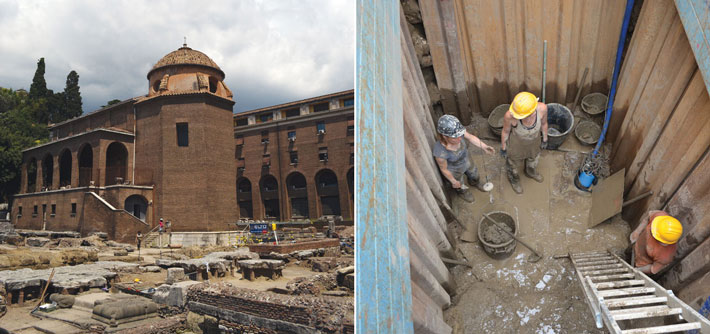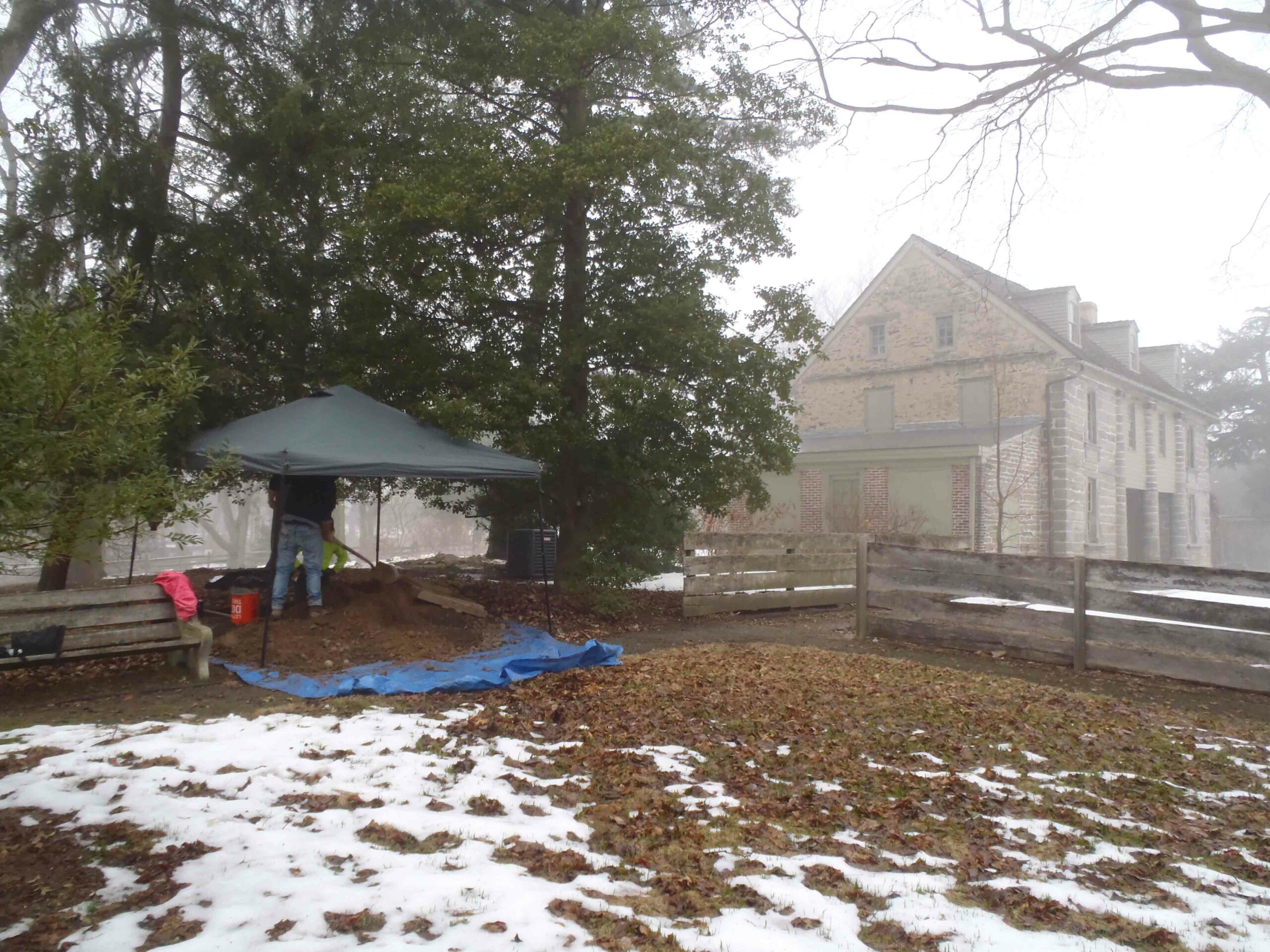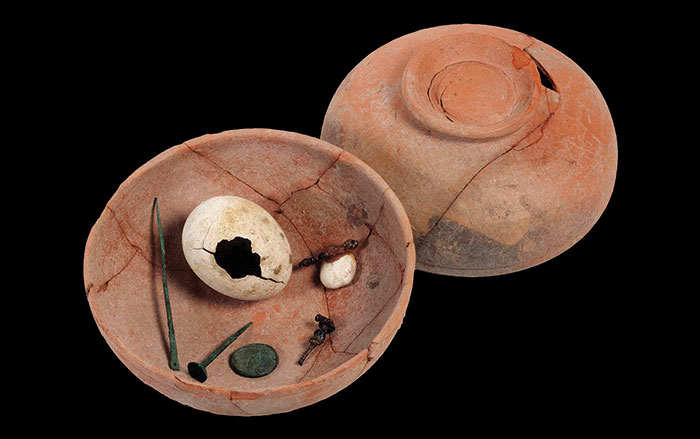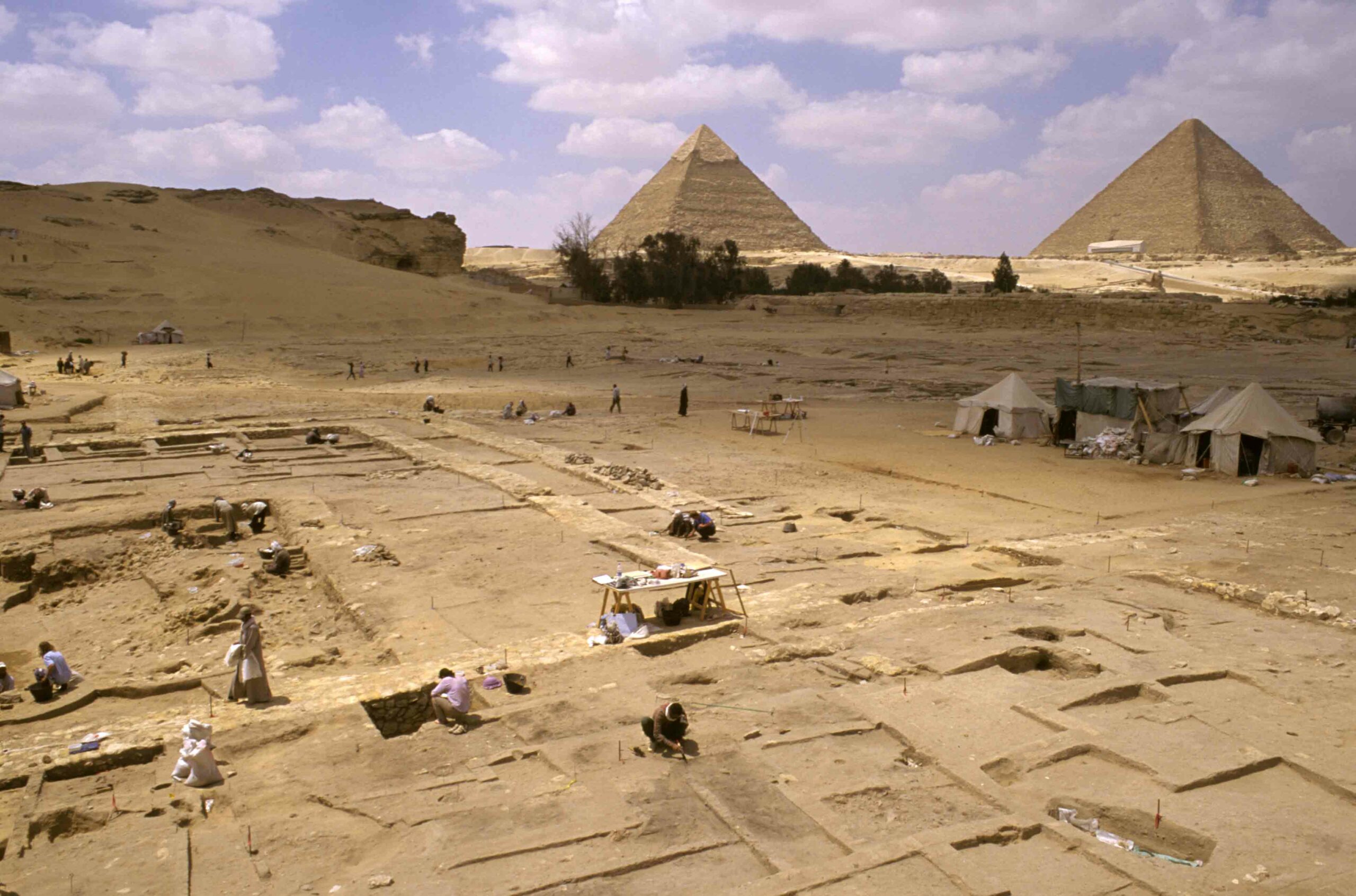
The Sant’Omobono archaeological site in Rome isn’t much to behold. It is strewn with a seemingly haphazard array of stone blocks, walls, ditches, and the occasional column drum—hardly pleasing to the eye. Even the eponymous Renaissance church that sits atop the site has been labeled as “incongruously ugly” by one prominent archaeologist. So it’s not surprising that tourists on their way to better-known monuments scarcely give it a second look.
This past January, however, the site suddenly received a great deal of attention when multiple international news sources reported incorrectly that Rome’s oldest temple had just been discovered there. As the archaeologists of the Sant’Omobono Project, an ongoing collaboration between the Superintendency of the Capitoline, the University of Calabria, and the University of Michigan, had actually made clear, this temple has been known—although rarely seen—since the 1930s, when it was first discovered.
Beneath Sant’Omobono lies a series of religious buildings that defined the site for much of the first millennium B.C. The importance of this area, situated at a bend in the Tiber River and known as the Forum Boarium, or “cattle market,” stemmed from its location at the nexus of several ancient communication and trade routes. It was the economic center of early Rome, complete with the city’s earliest river harbor capable of providing a safe haven for ships, and an international marketplace where goods, as well as cultural ideas, religions, and languages, were exchanged. It was also a prime location for the construction of a temple to protect and oversee this activity. “The [Sant’Omobono] site is crucial for understanding the related processes of monumentalization, urbanization, and state formation in Rome in the late Archaic period,” says Dan Diffendale, a member of the University of Michigan team. The site’s main archaeological features are the twin temples of Fortuna and Mater Matuta, which date to the late sixth or early fifth century b.c. Although these are among the oldest temple remains in ancient Rome, they actually sit atop an even older structure. This is the ancient Archaic period (roughly 800–500 B.C.) temple that January’s reports referred to.

This structure has been notoriously difficult to evaluate, because it lies deep beneath the ground, well below the city’s water table. Now, however, the Sant’Omobono Project has finally been able to get a glimpse at the early temple’s foundation. In order to achieve this, steel retaining walls were hammered into the ground to hold back the weight of the waterlogged soil, and mechanical pumps were then used to drain the trench. At a depth of more than fifteen feet, three courses of stone blocks belonging to the ancient temple were identified. “We were able for the first time to record the Archaic foundation with modern means, using total station and photogrammetry, as well as extensive photography,” says Diffendale. “This is the first time that the Archaic podium has been exposed in relatively dry condition.”
In addition, the Sant’Omobono team was able to recover hundreds of artifacts, including votive offerings, drinking vessels, and figurines. These suggest that the temple dates to the late seventh and early sixth centuries B.C., making these the oldest known temple remains in Rome. For safety reasons, the trench could stay open for only three days before it was backfilled. Nevertheless, this latest round of work will have long-lasting effects on archaeologists’ study of the development and growth of the eternal city. The Sant’Omobono site has finally gained its rightful place in the spotlight as one of ancient Rome’s most important, even if least well known, sites.











